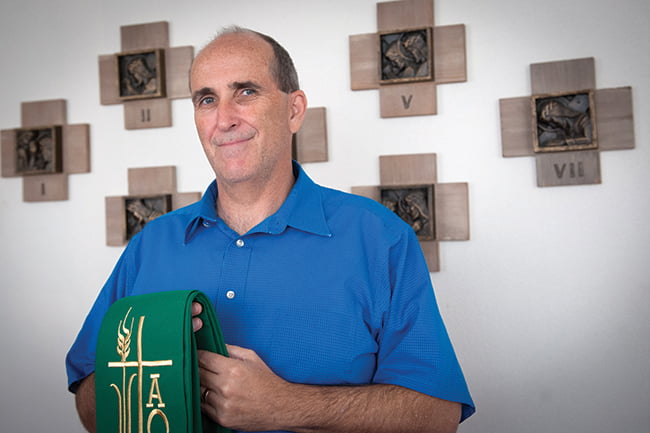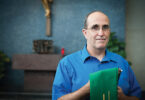
by Leon Suprenant
Deacon James Keating of the Archdiocese of Omaha, Nebraska, has written beautifully concerning the “creative tension” in the deacon’s identity.
After all, the deacon seems to share in some respects in the life of priests, and yet he also shares in the life of the laity, with whom he lives and works in the world.
For that reason, Deacon Keating says that a deacon is a man with a foot in both worlds, “a cleric living a lay life.”
I have long pondered that “foot in both worlds” analogy. It certainly can be misunderstood.
Sometimes when we speak of someone with a foot in both worlds, we imply that they’re wishy-washy or unsure about which “world” they belong in.
Maybe when we hear the expression, we think of some hybrid character that is part cleric and part layperson that nobody can relate to. Or perhaps the deacon is a superhero — a mild-mannered accountant by day who ducks into the phone booth (or more often, the sacristy!) and transforms into “super deacon” on Sunday!
Sometimes, instead of saying that someone has a “foot in both worlds,” the expression will be having a “foot in both camps.” This expression presupposes that the “two worlds” are competing entities — church vs. world, or maybe even hierarchy vs. laity.
In this polarized reality, the deacon is then some sort of schizophrenic double agent who plays both sides of the fence, and not an instrument of peace.
Of course, none of these images is true. In reality, the deacon has both feet in the institutional church as an ordained minister and, at the same time, has both feet in the secular world.
And yet, through a deep prayer life, sound formation, personal “balance” and, above all, the grace of the sacrament, the two realities are integrated. That’s the “creative tension” of which Deacon Keating speaks.
With apologies to St. Augustine, the deacon can truly say to his community: “For you, I am a deacon; with you (and at the same time), I am a Christian.”
Far from being an instrument of division, the deacon is uniquely poised, and indeed called, to be a bridge for hurting people to receive the mercy and healing of the church. The deacon is truly the hands (and feet!) of the bishop but, at the same time, a relatable brother in the Lord for the lay faithful.
We see this dynamic at work in the dismissal at Mass. The deacon is the spokesperson for the church, commissioning the faithful to go forth in peace, to infuse the world with Christian charity.
But his role doesn’t end there. The deacon himself is called to be a servant leader among the faithful, at the forefront of bringing faith to life in Christian service.
As St. Paul, quoting Isaiah, says: “How beautiful are the feet of those who bring good news” (Rom 10:15).

